Water Quality InformationWritten By Actual Experts
RSSHow Does Lead Enter Drinking Water?

No Good Deed Goes Unpunished
Update 1/25/2016 : We have been contacted by Mr. Savage, he acknowledged his mistake, and pulled down his post. We thank him for this. We are certainly aware of the fraud that follows tragedy.
Accusation of Fraud:
Yesterday (1/24/2016), Hydroviv was falsely accused by a Rachel Maddow Show Contributor (Chris Savage) of being part of a scam, and his accusation has been shared and retweeted multiple times. Mr. Savage's Twitter handle is @Eclectablog, and a screenshot of his post, almost immediately after it was posted is shown below:
 I don’t know Chris Savage. I've never talked to him, and he apparently did not do any background research on Hydroviv or myself. I have submitted my direct contact information into the "Contact" section of his website to try and clear up any misunderstanding, as well as directly replied to his tweet. No Response.
I don’t know Chris Savage. I've never talked to him, and he apparently did not do any background research on Hydroviv or myself. I have submitted my direct contact information into the "Contact" section of his website to try and clear up any misunderstanding, as well as directly replied to his tweet. No Response.
Here’s the truth about the partnership between Hydroviv and the “Filters For Flint” Facebook Community:
Origin of Water Filters for Flint partnership:
On January 20, 2016, Hydroviv received a call from a Julia Smith, a woman from Memphis, asking if we would be willing to partner with a “still-to-be-formed” Facebook group that links Flint residents in need with donors who want to help. She told me her story about how she had literally purchased a high-end water filter (not Hydroviv) on Amazon for a complete stranger in Flint, because she saw some heartbreaking photos. Her idea was to create a Facebook Community that brought together people in need with people like her who wanted to help. She found Hydroviv through the #FiltersForFlint hashtag that we have been using on Facebook, Instagram, and Twitter for some of our other filter donation campaigns. Within 24 hours, she had put together the FB Community, and started linking donors and recipients.
Financial Arrangement:
We agreed that it would be appropriate (both logistically and appearance-wise) for Hydroviv to handle all aspects of money, and that the Facebook Community would serve only to link people in need with people who wanted to help. She did not ask for any kind of “kickback,” nor would I have agreed to any kind of arrangement like that (furthermore, at the $65 price, there is nothing to kick back). In case this woman has not done enough to help people by setting up the forum, she has donated several water filters for Flint through her own program.
Logistics of The Partnership:
The logistics behind the partnership between Hydroviv and the “Filters For Flint” Facebook Community are straightforward: Hydroviv created an item in our store called “Donate A Water Filter To A Resident of Flint, Michigan #FiltersForFlint.” After a person donates a system through Hydroviv's secure store/checkout, we use UPS to ship the filtration system directly to a resident of Flint that reached out through the Filters For Flint Community. That's it.
Second Claim: Government's Free Filters Are The End-All Solution
The second claim was that the government is providing filters to Flint residents for free, so there’s no reason to send anything else. This assertion is inconsistent with what we are hearing from people in Flint.
We tip our hat to the people in Flint who are working to distribute bottled water and filters. However, we receive requests every day from individuals and child-focused organizations telling us that they logistically cannot haul enough bottled water, can’t get filters fast enough, or that they don’t trust the products given to them by the same people who ignored the problem for so long. The reality is, the filters that are being distributed by the government will have a much shorter lifetime than expected in Flint, because the lead concentrations from the samples used in the certification tests are lower than the levels being measured in Flint. Once the filtration capacity for lead (not gallons of water) is reached, the filters are worthless.
Regardless of the fear vs. facts, nobody disagrees that people in Flint need to be filtering their water until the measures are in place, and if it lowers their anxiety to receive a DONATION from someone not affiliated with their municipality… so be it. Companies much larger than Hydroviv are doing the exact same thing, and we encourage people to donate through them if it makes you feel more comfortable than working with Hydroviv.
The Purpose For This Response is Two-fold:
1. To lay out the facts in hopes that the death threats will stop.2. To assure any of our donors who read the accusation (or any subsequent retweets) that they have not been scammed. However, if you feel any uneasiness, Hydroviv will refund your contribution, and I will personally cover your donation, no questions asked.
Respectfully,
Eric Roy
Eric Roy, Ph.D. | Scientific Founder
Tech Talk: A Very Close Look at How Water Filters Work

The concept of "saturating a filter" is best demonstrated using Scanning Electron Microscope (SEM) images of two different types of filtration media. These images were collected as part of a product life cycle failure test, where we intentionally pushed the filtration system beyond its useful life.

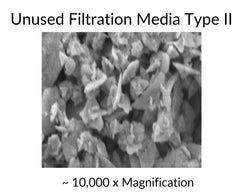
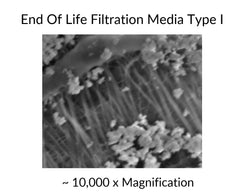

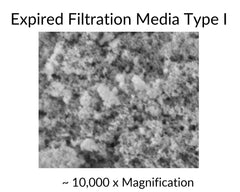
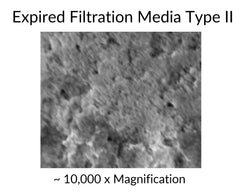
Pretty Neat Eh?
As always, feel free to leave water filter technology or water related questions/comments in the comments section, or send your thoughts to info@hydroviv.com.
Have a great day!
Other Great Articles From Water Smarts Magazine:
Tap Water Chlorination: The Good, The Bad, The Unknown
Fluoride in Municipal Tap Water: What You Need To Know
Disinfection Byproducts: What You Need To Know
Anatomy of DC's Tap Water
The Washington Aqueduct (Army Corps of Engineers)and DC Water (District of Columbia Sewer and Water Authority or DC WASA) are the two government entities that produce and distribute Washington D.C.’s tap water. The Washington Aqueduct collects water from the Potomac River, treats it, and sells it to DC Water, and DC Water is responsible for distributing the water to homes and businesses in DC, as well as maintaining water quality standards along the way.
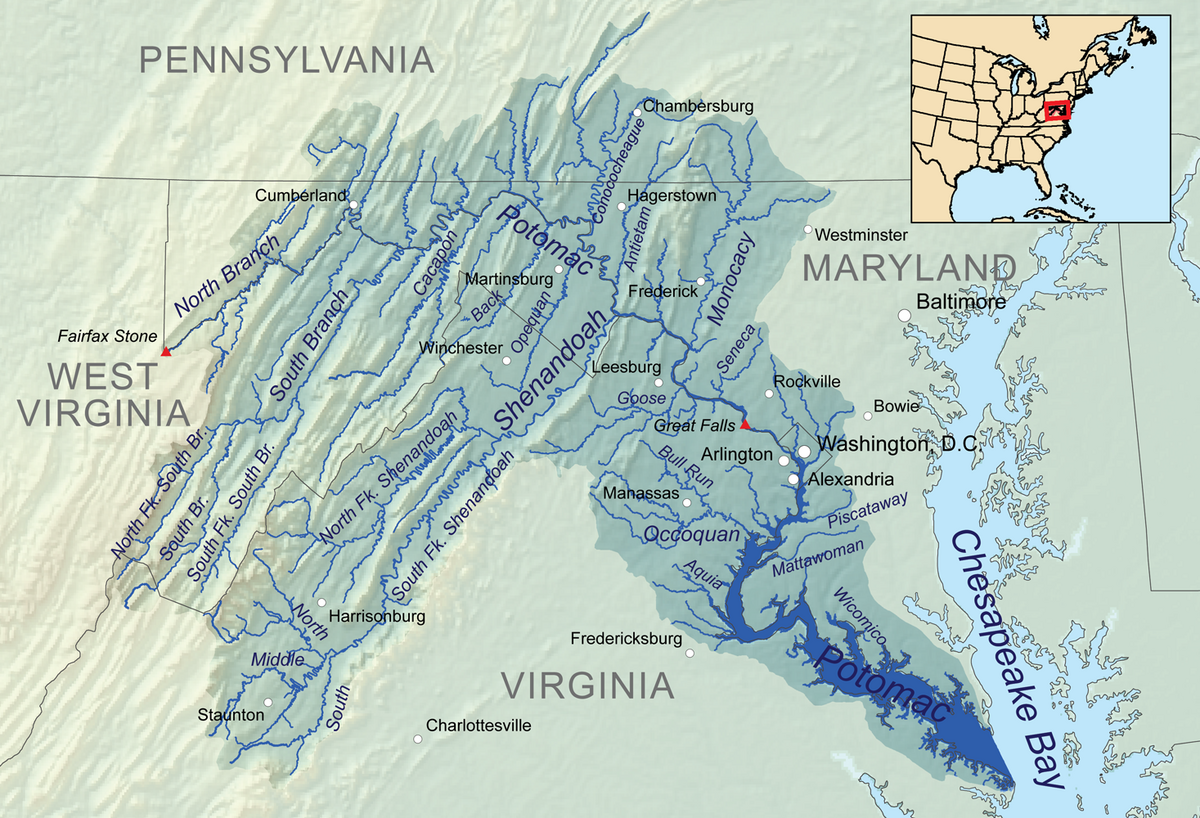
By Kmusser - Own work, Elevation data from SRTM, hydrologic data from the National Hydrography Dataset, urban areas from Vector Map, all other features from the National Atlas., CC BY-SA 3.0
DC WASA does much more than “keeping the pipes flowing” (which with more than 1300 miles of pipe is a logistical feat on its own), they also employ a team of dedicated water quality experts, all working to ensure that water quality meets or exceeds standards set by US EPA. This means running 24/7 compliance (tests that they are legally obligated to do) and voluntary (above and beyond) monitoring programs throughout the city. One interesting aspect of this voluntary program is maintaining mobile laboratories that are staffed with technicians that can be dispatched to investigate emergencies and respond to customer complaints.
DC WASA also puts a great deal of time and effort into community engagement and public awareness. DC WASA participates in over 100 community outreach events each year to help customers understand the valuable water services they provide. One example of these programs is the Clean Rivers Project, where DC WASA promotes best practices practices to minimize the amount of sewer overflow that is discharged into D.C.'s waterways. In addition to managing a water education program for District students, DC WASA hosts annual town hall meetings in every ward of the city.
Throughout my career, I’ve had the opportunity to work with a number of municipalities (both large and small), and DC WASA does a very good job with information transparency. I would encourage all residents to check out their website (www.dcwater.com) for more information, which includes things like: water quality reports, overall strategic plan, and the role that residents play in maintaining water quality within their own home.
Lead Contamination in Flint, Michigan Drinking Water
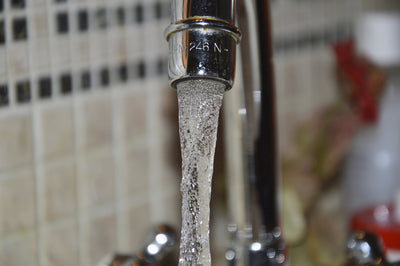
Eric Roy, Ph.D. | Scientific Founder
***11/20/2019: Note from Eric. It’s been recently brought to my attention that the July 16, 2015 date on this article may have been incorrect, and that the correct publication date is October 14, 2015. We’ve changed the date listed on the article to reflect this.***
I wanted to take a make our readers aware of a largely unreported disaster that is underway in Flint, Michigan. The residents of Flint, MI are being poisoned by lead in their tap water because the municipality messed up... big time. In this post, I'll focus on the science behind lead contamination, the facts (as we know them) of what happened in Flint, and touch upon another incident in recent history where a similar thing happened.
All water has impurities in it. Most impurities are harmless (e.g. dissolved oxygen, minerals), some are harmful (e.g. lead, arsenic, mercury).
Impurities typically enter tap water in 3 ways:
- Some are found in the source water (e.g. naturally occurring minerals)
- Some are deliberately added as part of the treatment process (e.g. chlorine)
- Some are picked up along the way from the treatment facility to the tap.
Lead is almost never found in source water at dangerous levels, and nobody deliberately adds lead to their water supply, because it's toxic. Lead can, however, be be introduced to tap water as it flows from the treatment facility to the tap.
How is Flint’s drinking water picking up lead in transit?
It’s pretty straightforward: Nearly all homes with plumbing installed before the 1986 use lead-containing solder to join copper pipes. Lead can also be found in residential plumbing fixtures manufactured before 1998. Additionally, some older homes use lead service line pipes to connect water mains to homes. Proper water quality testing (e.g. pH, chloride, toxic metals) and corrosion control practices (e.g. monitoring chloride levels, maintaining a slightly alkaline pH, adding corrosion inhibitors) are what keep residents with older plumbing and service connections safe from lead contamination. This is not unique to Flint. Unfortunately, it's not always done correctly, and residents suffer.
In Flint, as well as other places where high lead levels have leached into municipal tap water (e.g. Washington, DC in the early 2000’s), monitoring and corrosion control measures failed, which allowed lead to dissolve from pipes/fittings/fixtures and poison the residents.
What changed in Flint to cause the lead contamination problem?
In 2014, Flint stopped buying its tap water from Detroit (which has proper corrosion control measures in place), and began collecting their water from the Flint River as part of a plan to switch to a different water supply. During the changeover process, the municipality failed to implement effective corrosion control measures, and the corrosive water allowed lead to leach from lead-containing plumbing. Because proper water quality monitoring procedures were not in place, the Lead problem was not widely discovered until recently.
What Now?
Flint has announced that it will resume buying water from Detroit, which gets its raw water from Lake Huron and has proper monitoring and corrosion control measures in place. This is a great first step, but it's important that Flint keeps monitoring their water for lead, because the pipes can continue to leach lead while the corrosion control measures build up the protective layer on the inside of the pipes. The length of time this takes will depend on the degree of corrosion, and whether or not Flint's water will have "boosters" of the anti corrosion chemicals.
Until lead levels drop, residents are being urged to use a quality water filtration system that effectively removes lead. Contrary to some of the information out on the internet... boiling water before use does NOT decrease the amount of lead. It is critical that Flint residents use a filter that effectively removes lead, and also changes the cartridges on a regular basis. I would expect that the filtration capacity (in gallons) for lead would be much lower than the manufacturer claims, because the gallon capacity ratings were determined using water with much lower lead concentrations than what is currently being measured in Flint.
Even though there is a plan moving forward, this type of incident almost certainly caused harm to some residents Flint, and the areas most affected by it were probably homes with older plumbing. Even though lead contamination is odorless and tasteless, it has devastating effects on human health. Since Flint began using the Flint River as a water source, numerous children have tested positive for high levels of lead in blood, and a number of schools have recently shut down water fountains due to high lead levels. When a similar lead contamination issue occurred in Washington DC between 2001-2004, stillbirths shot up during the affected years (Edwards, 2013). As was the case in Washington, DC, the full extent of harm likely will not be realized for several years.
Sources:
M. Edwards. Fetal death and reduced birth rates associated with exposure to lead-contaminated drinking water. Environmental Science & Technology. Published online December 9, 2013. doi: 10.1021/es4034952.
Other Articles We Think You Might Enjoy:
Tap Water Chlorination: The Good, The Bad, The Unknown
Fluoride in Municipal Tap Water: What You Need To Know
Disinfection Byproducts: What You Need To Know





